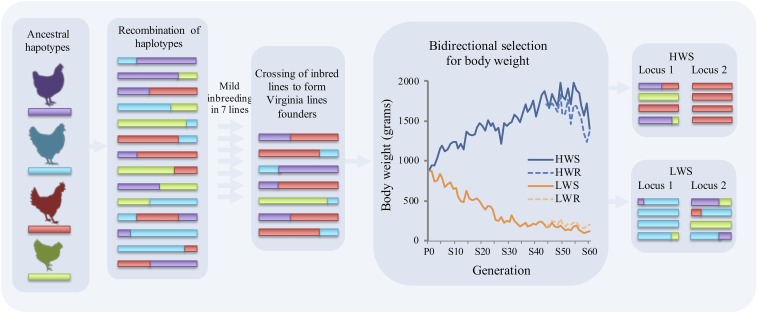Figure 1.
Representation of the formation of genomic signatures in the Virginia body weight lines. Ancestral haplotypes that contributed to the formation of the White Plymouth Rock breed would have recombined over time. Haplotype variation was likely constrained in the seven partially inbred lines, which were crossed to form the founder population of the Virginia body weight lines. The bidirectional change in eight-week body weight in the Virginia body weight lines is presented in the graph from the parental (P0) across the selected generations (S1-S60) for the high weight selected (HWS; blue unbroken line) and low weight selected (LWS; orange unbroken line) body weight lines. Body weight within relaxed sublines are also shown for the high weight relaxed line (HWR; blue broken line) and low weight relaxed line (LWR; orange broken line) at corresponding selected generation. Haplotype frequency and ancestral haplotype origin are depicted at two hypothetical loci to the right. At locus 1, HWS continues to segregate with multiple haplotypes, whereas LWS is fixed for an extended blue haplotype. At locus 2, HWS is fixed for an extended red haplotype, whereas LWS continues to segregate with multiple haplotypes.

